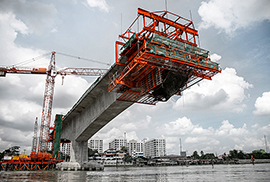This study by Risk Control is the second of three commissioned by the G20 Independent Review of MDBs Capital Adequacy Frameworks. The Panel’s report (find it here) was published in August 2022.
We analyse how the agency ratings of a Multilateral Development Bank (MDB) are affected by a proportionate expansion in its Development Related Assets (DRAs) and liabilities while capital resources are kept constant. We identify the ratios that the rating agencies employ in rating MDBs and compute, for a stylised example MDB, how much this MDB can expand its lending before different ratios trigger ratings downgrades.
The modeling of ratings impact is based on a detailed analysis of CRA methodologies, building on Risk Control’s experience in working on the application of these methodologies to actual MDBs. The calculations are performed using Risk Control’s Rating Scenario System. This software replicates the full scorecard of MDB ratings for the three major rating agencies, Fitch, Moody’s and Standard & Poor’s. The analysis demonstrates the considerable variation among the MDB rating methodologies of the three major agencies and how their criteria bind in very different ways as a particular MDB changes its strategy.
The calculations are performed using asset, liability and other financial data for a stylised MDB. Development Related Asset (DRA) data for this MDB have been created using publicly available information from other existing MDBs. The liability non-DRA asset and other financial data employed are comparable to data that we have encountered in earlier assignments with MDBs. The rating exercise reported here is a conceptual experiment designed to improve understanding of how MDB ratings are affected by increases in lending. The “stylized” MDB employed is designed to be realistic and representative but the actual impact of expansion on ratings can vary substantially across MDBs, depending on other aspects of their activities and business model. The numbers we present should, therefore, not be interpreted as the actual lending headroom of other MDBs.
To examine whether rating agency views of MDBs are conservative, we also compute credit risk Economic Capital estimates for the stylised MDB. The Economic Capital estimates (using credit Value-at-Risk (VaR) and Expected Shortfall (ES) measures) are calculated using Risk Control’s RC-Capital Model, an industry standard, rating-based credit portfolio model. This approach closely resembles those followed by MDBs. RC-Capital Model is used for this purpose by several MDBs, and others employ comparable methodologies.
Our key findings are:
- On ratings, although all three agencies would initially judge the stylised bank to be AAA, the methodologies lead to very different results. This is demonstrated with expansion of DRAs rapidly leading to a downgrade in the Moody’s rating but not in that of Standard & Poor’s. (Note that the greater headroom that our stylised MDB enjoys under the S&P methodology reflects the allowance that S&P makes for callable capital.)
- The relationship between rating downgrades and DRA expansion is highly non-linear in its impact on the number of notches. So, the scope for one or other rating to experience severe downgrades as DRAs expand is great.
- For the notional MDB, substantial growth of the portfolio would appear to be possible if an AA rating is deemed acceptable. The calculations do not allow for the long-run impact on the MDB of a deterioration in the spreads it would face in the bond market or any re-evaluation by the rating agencies of the MDB’s governance or credit risk controls. Some MDBs already have relatively high leverage ratios which are currently offset by other aspects of the rating methodologies.
- On Economic-Capital-based assessments of capital adequacy, the confidence level of the stylised MDB is very high, i.e., the probability of failure is vanishingly small before the portfolio is boosted. Based on the calculations reported here, the MDB could expand its DRAs by 300% before its probability of exhausting capital over a 3-year horizon exceeds 1 basis point. (Here, we do not allow for the capital demands of market or operational risks which tend to be minor for MDBs but we do not allow either for callable capital.)
- Our calculations suggest that the rating agencies would downgrade the notional MDB after DRA expansions of 197%, 11% and 34% in the cases of S&P, Moody’s, and Fitch, respectively. The relatively large headroom under S&P reflects the allowance that agency makes for callable capital. If, in its qualitative choices, S&P a took less favourable view of the reliability of the MDB’s callable capital than we assume in our central-case assumptions, the headroom would shrink to 43% (see the Appendix and Table A1, in particular). This result is consistent with the conclusion that the rating agency evaluation of AAA status for MDBs is too conservative and suggests that the allowance they make for preferred Credit Treatment (PCT) is insufficient.
Read the full study here.


